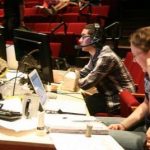When I was a very junior consultant, we were coached that there was one client question you were neither expected or allowed to answer, “how much is this going to cost?” A few years later, in the midst of getting my MBA, the one question you were trained to ask and answer was “how much is this going to cost?” Lately, I’ve been thinking about how much of my career has been spent caught between these two pieces of conflicting advice.
Nailing down answers to that question is a matter of nailing down assumptions. What materials from what suppliers? How many customers in each market? What’s the going rate for good sales reps? All reasonable questions; they all depend on knowing what you are doing.Â
They are also generally impossible to answer when you don’t. Pretending to more knowledge or foresight than you have isn’t a recommended approach. As an individual manager, what do you do when faced with this dilemma? You’re being asked for answers to questions you are still trying to formulate. How do you work at articulating outcomes to drive planning when your fuzzy view of outcomes is what you are trying to address?
Too often, the default answer is to accept the brashest claim to knowledge in the meeting. “I have the answer” wins out over “let’s explore and see what we can learn.” We need to replace that default with approaches more likely to surface answers that we couldn’t know beforehand but outstrip the obvious, safe, and, ultimately, disappointing answers limited by what we already know.
You still have a project management task; organizations do not have unlimited resources even when the questions are open-ended. You are not simply executing, you’re also doing field research. The project management task is to thread a needle between systematically managing effort, tasks, and resources and what the phenomena in the field are revealing about how to adjust and redirect those resources and tasks.Â
This marriage of exploration and execution is what agile methods are seeking in the realm of systems development. But the strategy extends to any setting where the destination has to be discovered or invented. With apologies to Gene Kranz, failure is always an option. It just shouldn’t be the only one.
 In April, 2003, the late
In April, 2003, the late  Review:
Review:  It was about 2am, the stage was bare, and the house was dark. Tech rehearsal had wrapped at midnight. There were four of us still in the theater–Producer, Technical Director, Lighting Designer, and Stage Manager. We were setting the lighting levels for each of the hundred odd lighting cues we would execute for each performance.
It was about 2am, the stage was bare, and the house was dark. Tech rehearsal had wrapped at midnight. There were four of us still in the theater–Producer, Technical Director, Lighting Designer, and Stage Manager. We were setting the lighting levels for each of the hundred odd lighting cues we would execute for each performance.
